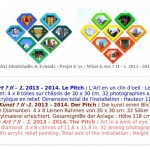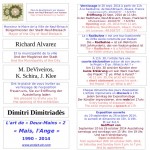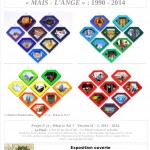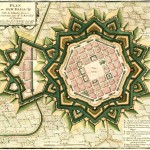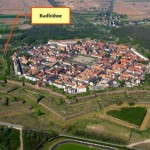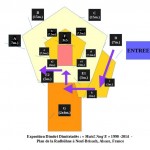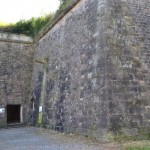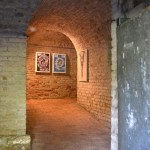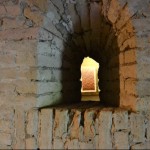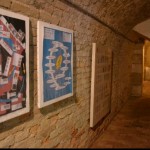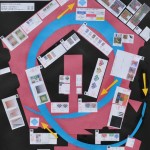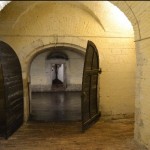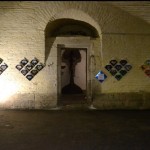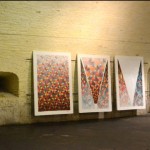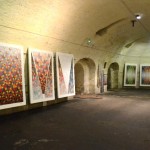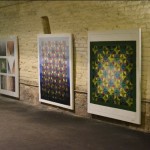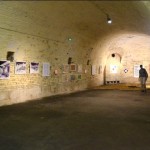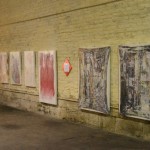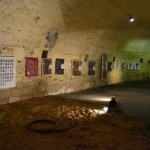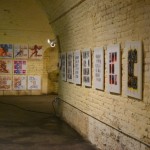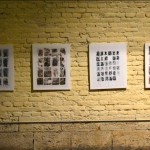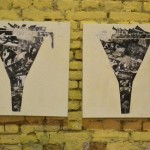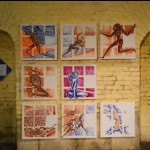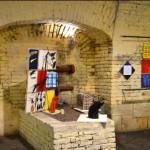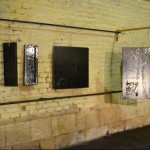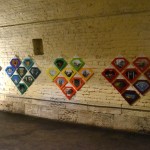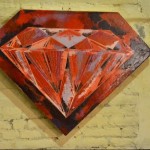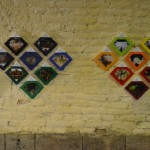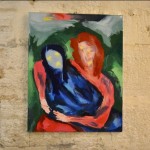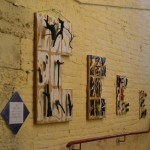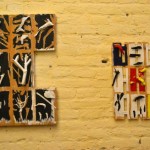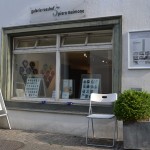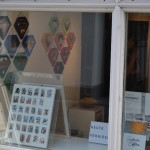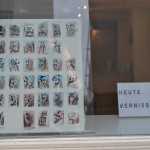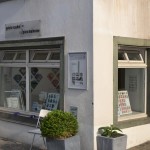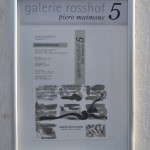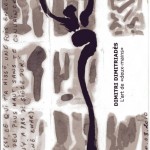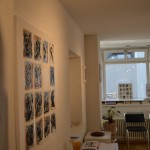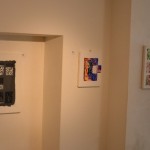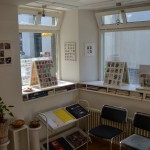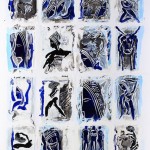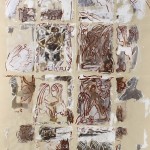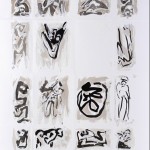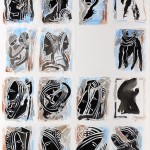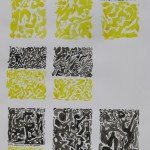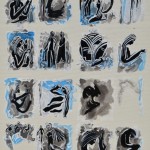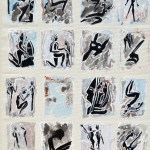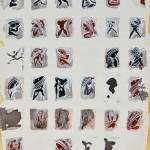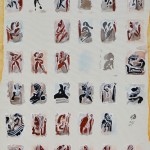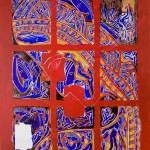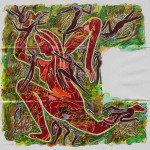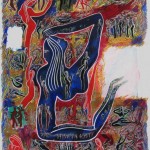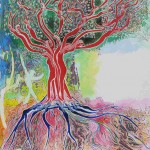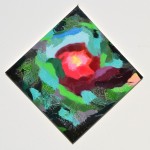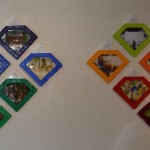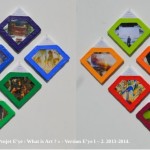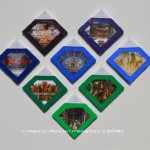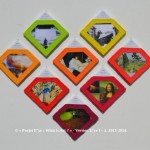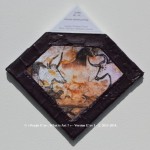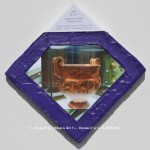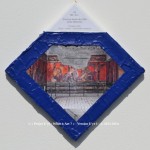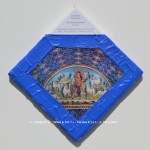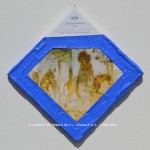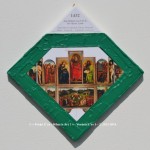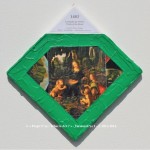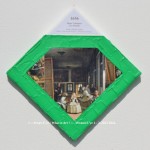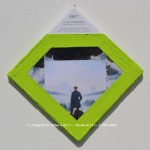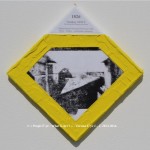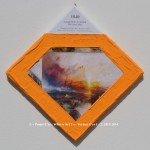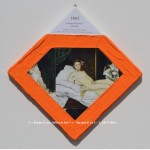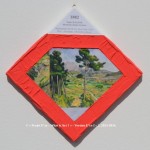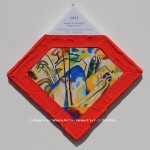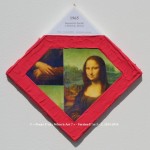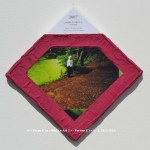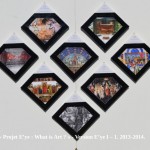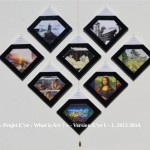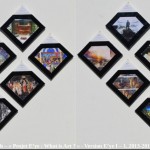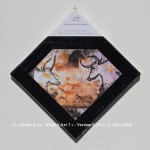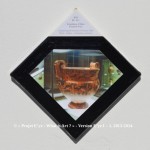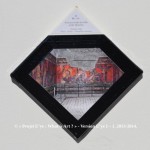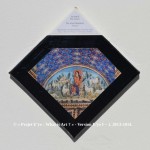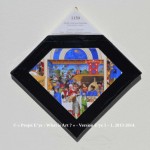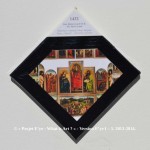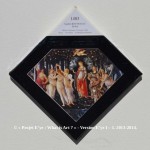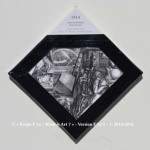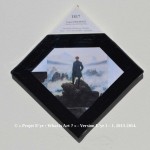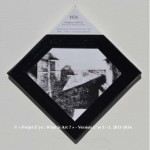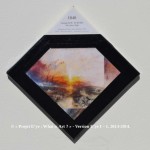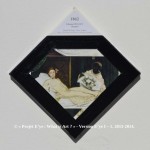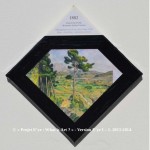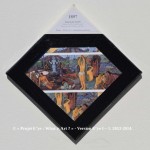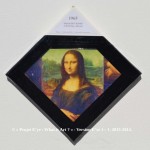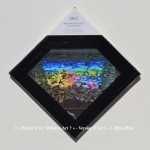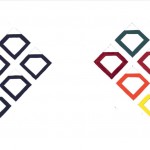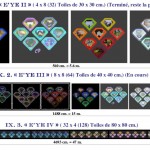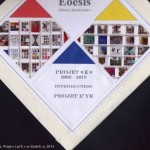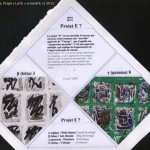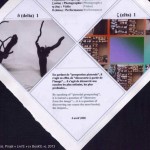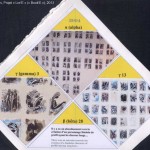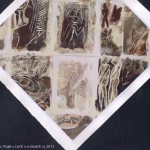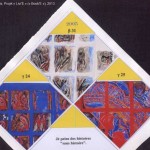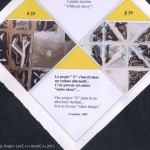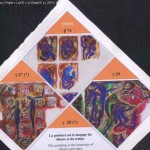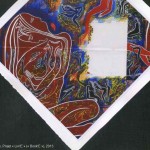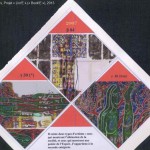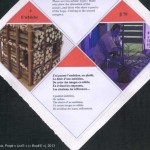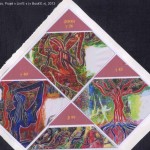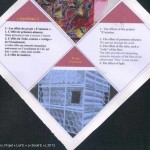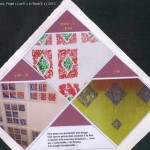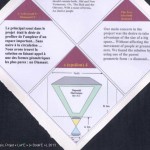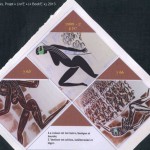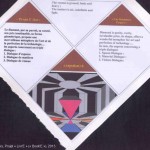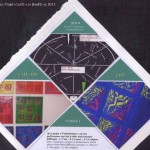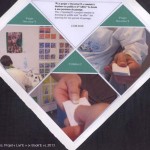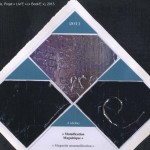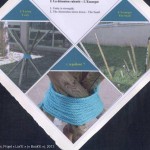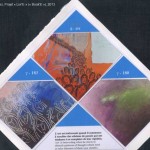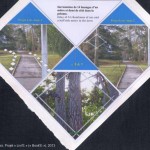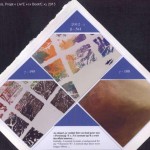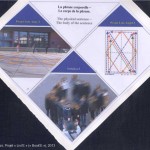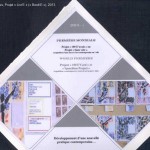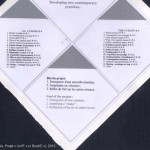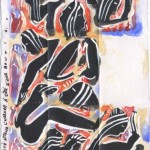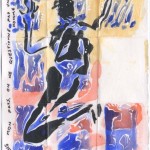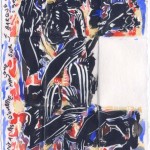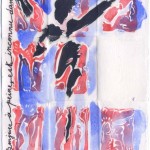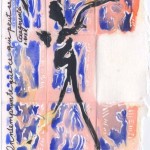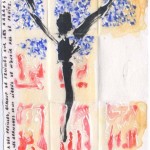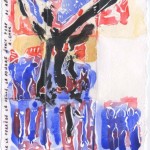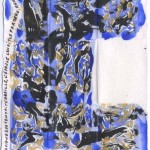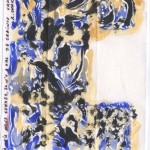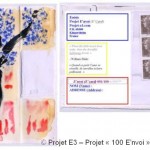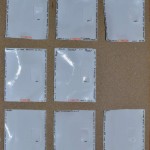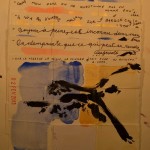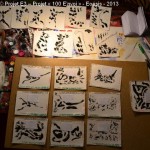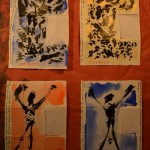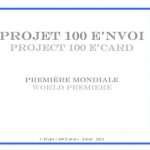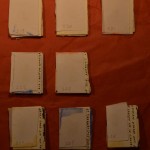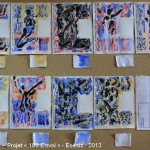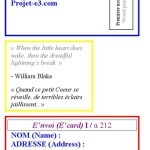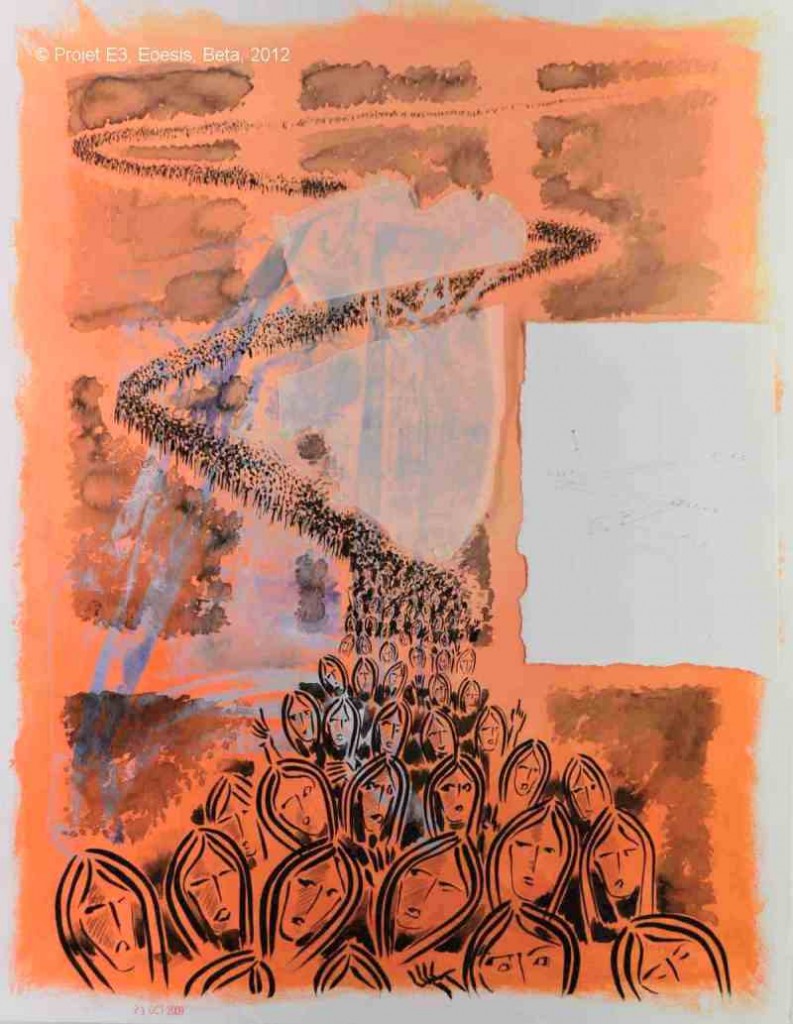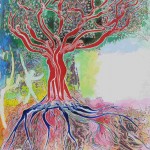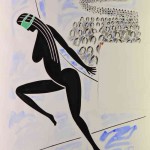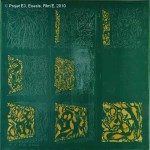THE PITCH : Art in a wink of eye – The portable museum
Read the history, principles and consequences of the project
* * *
- « E’ye : What is art ? » Version II – 1 : 1 – 32.
- « E’ye : What is art ? » Version II – 1 : 1 – 8.
-
II – 1. 1. 22.000 av. J.C.
Vénus de Laussel.
22.000 bef. J.C.
Venus of Laussel.
-
II – 1. 2. 15.000 av. J.C.
Bison d’Altamira.
15.000 bef. J.C.
Bison of Altamira.
-
II – 1. 3. 2.600 av. J.C.
Pyramides de Gizeh.
2.600 bef. J.C.
Giza Pyramids.
-
II – 1. 4. 447 av. J.C.
Réplique du Parthénon d’Athènes.
447 bef. J.C.
Replica of Athens Parthenon.
-
II – 1. 5. 40 av. J.C.
Laocoon .
40 bef. J.C.
Laocoön.
-
II – 1. 6 425.
Le Bon Pasteur.
The Good Shepherd.
-
II – 1. 7 850.
Le Voyage à Jérusalem.
Travel to Bethlehem.
-
II – 1. 8 1304-1313.
La Chapelle Scrovigni.
The Scrovigni Chapel.
- « E’ye : What is art ? » Version II – 1 : 9 – 16.
-
II – 1. 9. 1422.
La Philoxénie d’Abraham.
The Holy Trinity.
-
II – 1. 10. 1426 – 1452.
La Porte du Paradis.
Heaven’s Door.
-
II – 1. 11. 1443.
La Résurection.
Ressurection.
-
II – 1. 12. 1505.
Le Jardin des Délices.
The Garden of Earthly Delights.
-
II – 1. 13. 1514.
Mélancholia I.
Mélancholia I.
-
II – 1. 14. 1565.
Basilique San Giorgio Maggiore.
Church of San Giorgio Maggiore.
-
II – 1. 15. 1658.
La Laitière.
The Milkmaid.
-
II – 1. 16. 1656.
Les Ménines.
Las Meninas.
- « E’ye : What is art ? » Version II – 1 : 17 – 24.
-
II – 1. 17. 1787.
Amour et Psyché.
Psyche Revived by Cupid’s Kiss.
-
II – 1. 18. 1784.
Le Serment des Horaces.
The Oath of the Horatii
-
II – 1. 19. 1795.
Iliade, vers 1043-1044.
Iliad, verses 1043-1044
-
II – 1. 20. 1795.
Point de vue du Gras.
View from the Window at Le Gras.
-
II – 1. 21. 1850.
Palais de Cristal.
Crystal Palace
-
II – 1. 22. 1882.
Sagrada Família.
-
II – 1. 23. 1893.
La Porte de l’Enfer.
The Gates of Hell
-
II – 1. 24. 1895.
La Sortie de l’usine Lumière à Lyon.
Worker Leaving the Lumière Factory
- « E’ye : What is art ? » Version II – 1 : 25 – 32.
- II – 1. 25. 1964 – La Ville qui marche. / The Walking city.
- II – 1. 26. 1997 – Musée Guggenheim. / Guggenheim Museum.
- II – 1. 27. 1997-2005 – A soaPOPera for Laptops /iMacs. /
- II – 1. 28. 1997 – Rêve de Ballon. / Ballon Dream.
- II – 1. 29. 2000 – Collectionneur d’art. / Art collector.
- II – 1. 30. 2007 – Sans Titre (Cycle : Space Melancholy). / Untitled (Cycle : Space Melancholy).
- II – 1. 31. 2012 – Shiva. /
- II – 1. 31. 2012 – Tout meurt. / Everything dies.
| Year | Period | Artists | Work title | |
|---|---|---|---|---|
| 01 | 22.000 av. J.C. | XXII th millenium | Unknown | Venus of Laussel |
| 02 | 14.000 av. J. C. | XV th millenium | Unknown | Bison of Altamira |
| 03 | 2.600 av. J. C. | III rd millenium | Unknown | Giza Pyramids Pompéï |
| 04 | 447 av. J.C. (1897-1931) | V th century Bef. J.C. | Ictinos, Callicratès ( Dinsmoor, Russell, Hart) | Replica of Athens Parthenon |
| 05 | 40 av. J.C. | I st century Bef. J.C. | Agésandros, Polydoros, Athénodoros (attributed) | Laocoön |
| 06 | 425 | V th century | Unknown | The Good Shepherd |
| 07 | 850 | IX th century | Unknown | Travel to Bethlehem |
| 08 | 1304-1313 | XIV th century | Giotto di BONDONE (1266-1337) |
The Scrovigni Chapel |
| 09 | 1422 | XV th century – 1 | Andreï ROUBLEV (1360-1370 / 1427-1430) |
The Holy Trinity |
| 10 | 1426 – 1452 | XV th – 2 | Lorenzo GHIBERTI (1378 – 1455) |
Heaven’s Door |
| 11 | 1443 | XV th – 3 | Luca della ROBBIA (1400-1481) |
The Ressurection |
| 12 | 1505 | XVI th century – 1 | Jérôme BOSCH 1450-1516 |
The Garden of Earthly Delights |
| 13 | 1514 | XVI th – 2 | Albrecht DÜRER (1471-1528) |
Melancholia I |
| 14 | 1565 | XVI th – 3 | Andrea PALLADIO ( 1508-1580) |
La Basilique San Giorgio Maggiore |
| 15 | 1658 | XVII th century – 1 | Johannes VERMEER (1632-1675) |
The Milkmaid |
| 16 | 1656 | XVII th – 2 | Diego VELÁZQUEZ (1599-1660) |
Las Meninas, The Maids of Honour |
| 17 | 1787 | XVIII th century – 1 | Antonio CANOVA (1757-1822) |
Psyche Revived by Cupid’s Kiss |
| 18 | 1787 | XVIII th – 2 | Jacques-Louis DAVID (1748-1825) |
The Oath of the Horatii |
| 19 | 1784 | XVIII th – 3 | John FLAXMAN (1755-1826) |
Iliad, verses 1043-1044 |
| 20 | 1826 | XIX th century – 1 | Nicéphore NIÉPCE (1765-1833) |
First photograph of the history of photography |
| 21 | 1850 | XIX th – 2 | Joseph PAXTON (1803-1865) |
Crystal Palace |
| 22 | 1882 | XIX th – 3 | Antoni GAUDI (1852-1926) |
Sagrada Família |
| 23 | 1893 | XIX th – 4 | Auguste RODIN (1840-1917) |
The Gates of Hell |
| 24 | 1895 | XIX th – 5 | Auguste et Louis LUMIÈRE (Auguste : 1862-1954 ; Louis : 1864-1948) |
Worker Leaving the Lumière Factory |
| 25 | 1964 | XXth century – 1 | Ron HERON (Archigram) (1930-1994) | The Walking city |
| 26 | 1997 | XXth – 2 | Frank GEHRY ( Born in 1929) | Guggenheim Museum |
| 27 | 1997-2005 | XXth – 3 | G.H. HOVAGIMYAN Collaboration Peter SINCLAIR (Born in 1950) | A soaPOPera for Laptops /iMacs |
| 28 | 1997 | XXth – 4 | Patrick BAILLY-MAÎTRE-GRAND ( Born in 1945) | Ballon Dream |
| 29 | 2000 | XXIth century – 1 | Milan KUNC ( Born in 1944) | Art collector |
| 30 | 2007 | XXIth – 2 | Natalia JASKULA ( Born in 1974) | Untitled (Cycle : Space Melancholy) |
| 31 | 2012 | XXIth – 3 | Gautham NARANG | Shiva |
| 32 | 2012 | XXIth – 4 | Rafael ROZENDAAL ( Born in 1980) | Everything dies |
* * *
© Projet E3, Eoesis, « E’ye : What is Art ? » Version II – 1, 2012 – 2014





































